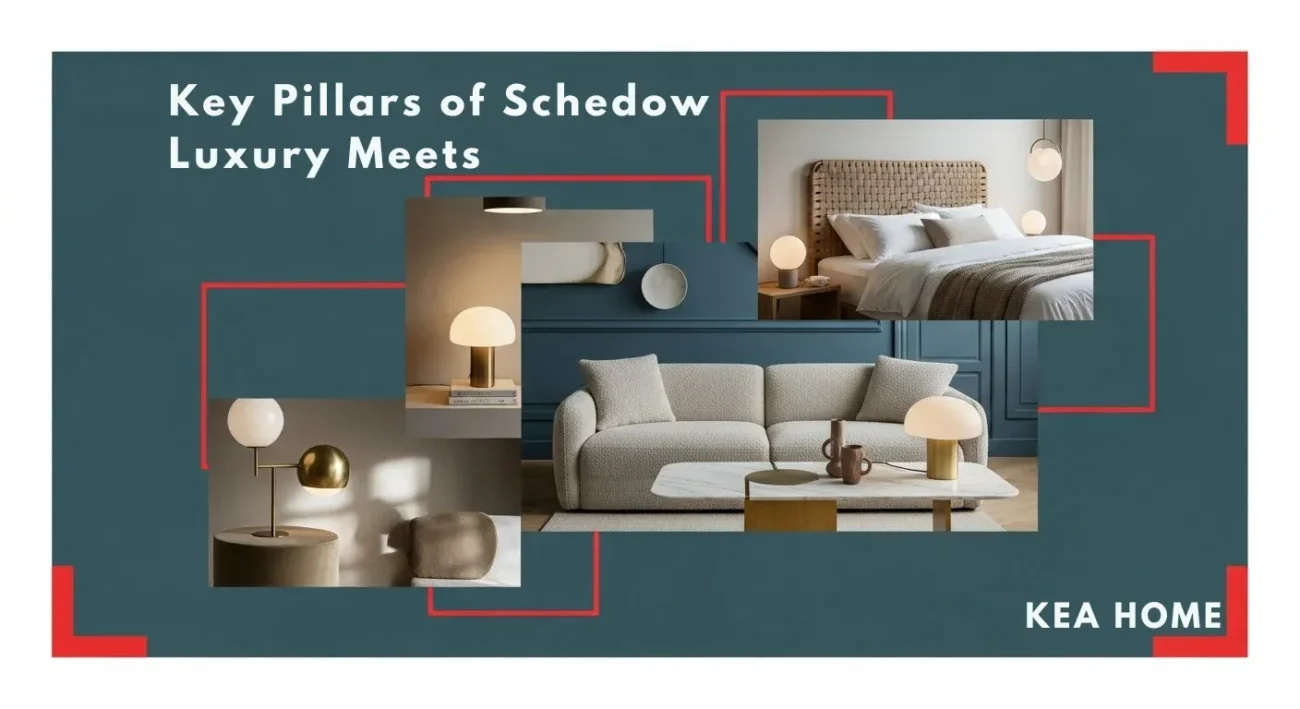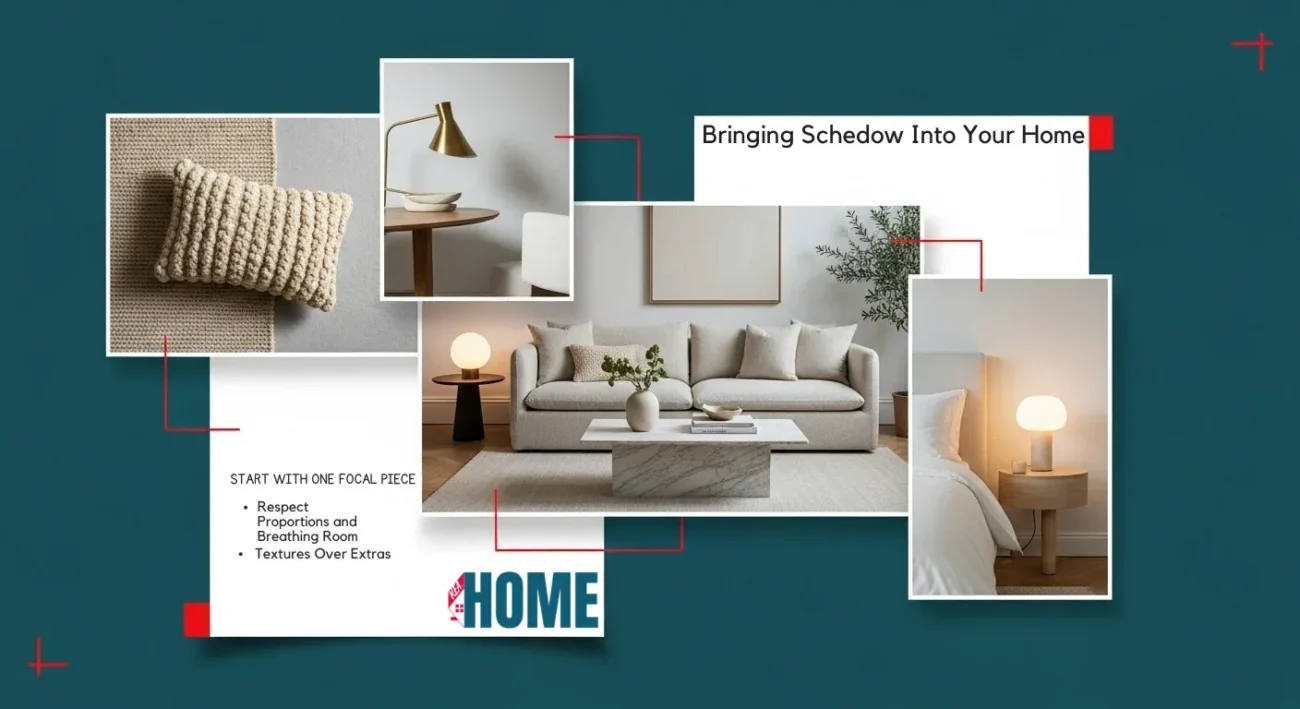Imagine walking into a room and feeling your heart exhale soft textures under your fingertips, lighting that flatters without glare, and pieces that whisper (not shout) elegance. I’ll take you on a guided tour through what Schedow is, how it’s carving a unique space in the world of home décor, and why it deserves your attention.
What Is Schedow
The name “Schedow” suggests elegance, a kind of understated identity. Though not yet a household brand (at least in public sources), Schedow represents a bold attempt to merge sublime aesthetics with everyday comfort.
Schedow’s core philosophy can be framed this way:
- Luxury without pretense — opulence that doesn’t intimidate.
- Comfort without compromise — sumptuous textures, ergonomic forms, and liveable designs.
- Subtle signature — design cues that feel cohesive across a home, giving a sense of identity without over branding.
- Timeless adaptability — pieces that age gracefully, rather than fading with trends.
Instead of chasing flash, Schedow’s ambition is to create spaces that feel elevated, calm, and deeply yours.
Key Pillars of Schedow Luxury Meets

Below are the pillars that make Schedow uniquely powerful. Each one is a lens you can apply in your own home.
Textural Layers:
Luxury is felt as much as seen. Schedow focuses on layering textures velvet, linen, boucle, nubuck leather in ways that feel rich but not fussy. A Schedow sofa might combine silk piping with a tactile boucle body. The idea is to invite touch and make the room feel alive.
Curated Color Palettes:
Schedow’s color stories usually rest on muted, deeply harmonized palettes: warm greys, muted taupes, dusky blues, warm ivories. Accent colors appear, but gently think a rich terracotta or soft sage, not jarring neons. The goal is serenity, not spectacle.
Subtle Detailing:
Rather than dramatic carving or flamboyant hardware, Schedow pieces tend toward refined detailing hand stitched seams, hidden joints, brass accents, or recessed profiles. These little touches show craftsmanship without overwhelming the space.
Modularity and Adaptability
Schedow designs often come in modular or reconfigurable forms. Sofas, shelving, and lighting adjust to different rooms and life phases (think: move, add a wing, adapt for a child or guest). This adaptability increases longevity.
Thoughtful Lighting and Mood
A Schedow room is never flat. Accent lighting, dimmers, layered sources, and carefully placed ambient light bring depth. Lighting is part of the design, not an afterthought.
Bringing Schedow Into Your Home

Here’s how to channel the Schedow vision into your space without a billionaire budget.
Start with One Focal Piece
Begin with one statement, high-quality item maybe a sofa, headboard, or a signature side table. Let that be your anchor. Everything else layers around it.
Respect Proportions and Breathing Room
Schedow emphasizes space and calmness. Don’t overcrowd. Leave breathing room for each piece. Let negative space (empty wall, floor) become part of the composition.
Textures Over Extras
Instead of many small decorative bits, invest in fewer, more tactile items—a luxurious throw, a sculptural lamp, a handwoven rug. Schedow values less clutter, more impact.
Harmonize Lighting Styles
Use ambient, accent, and task lighting together. Ambient via soft ceiling or wall fixtures; accent via floor lamps, table lights; task lighting for work zones. Use warm color temperatures to maintain comfort.
Layer Color Wisely
Pick a base palette, then layer one or two accent tones. Use them sparingly on a pillow, artwork, or small chair so they sing rather than shout. This restraint is a Schedow strength.
Schedow in Action Real World Room Concepts:
| Room | Schedow Design Elements | Atmosphere / Result |
|---|---|---|
| Living Room | • Three-seat Schedow sofa in linen-blend boucle (neutral tone) • Low-profile coffee table in pale marble with subtle brass inlay • Soft area rug with muted geometry • Two sculptural side chairs in brushed leather • Floor lamp with upward & downward light elements • One oversized framed abstract art piece in muted tones • Cozy throw and tall houseplant in raw clay pot | A warm, elegant living area that feels rich yet relaxed inviting enough to lounge while maintaining quiet sophistication. |
| Bedroom | • Schedow headboard in soft woven fabric • Crisp white or ivory linens with textured duvet • Bedside tables in matte wood or brass • Lamps with diffused, glare-free light • Soft patterned wallpaper (tone-on-tone) on one accent wall • Small chaise or bench seating corner • Minimal decorative objects: ceramic vase, personal keepsake | A serene sanctuary that balances luxury with intimacy perfect for rest, reflection, and personal warmth. |
| Dining Area | • Rectangular table in fine-grain wood (no ornate carving) • Chairs upholstered in neutral hues • Dimmable linear pendant light above table • Simple centerpiece: sculptural bowl or candles • Sideboard with neat glassware and a statement mirror above | A refined yet welcoming dining space stylish enough for gatherings, comfortable enough for everyday meals. |
FAQs
What kinds of homes suit Schedow?
Schedow works from small apartments to big homes. The key is proportion, restraint, and adaptation, not square footage.
Is Schedow expensive?
Some elements (signature pieces) may carry premium pricing, but many touches (throws, lighting, pillows) are accessible. You can scale gradually.
Does Schedow become dull over time?
No as long as you allow small refreshes and personal objects. Its stability is in the core palette and layering, not rigidity.
Can I mix Schedow with another style (boho, rustic, minimal)?
Yes use Schedow as your backbone. Bring in boho or rustic accents via small objects or textures, but let them play a supporting role.
How often should I update my space?
Rather than yearly overhauls, aim for small updates every season (textiles, lighting accents) to keep the feel alive without losing cohesion.
Final Thoughts
I believe Schedow isn’t just a style it’s a mindset. It’s the idea that home should feel elegant and restful simultaneously, that you don’t have to choose between wow and wearable, and that the best homes are those that balance restraint with personality.

